Ionosphere-Constrained Triple-Frequency Cycle Slip Fixing Method for the Rapid Re-Initialization of PPP
Abstract
1. Introduction
2. Methodology
2.1. Observation Model and Error Handling
2.2. EWL-WL-NL Cascading Cycle Slip Fixing
2.2.1. EWL Cycle Slip Fixing
2.2.2. WL Cycle Slip Fixing
2.2.3. NL Cycle Slip Fixing
3. Results
3.1. Simulated Kinematic Experiment
3.2. Kinematic Experiment
4. Conclusions
Author Contributions
Funding
Acknowledgments
Conflicts of Interest
References
- Zumberge, J.F.; Heflin, M.B.; Jefferson, D.C.; Watkins, M.M.; Webb, F.H. Precise point positioning for the efficient and robust analysis of GPS data from large networks. J. Geophys. Res. Solid Earth 1997, 102, 5005–5017. [Google Scholar] [CrossRef]
- Yang, F.X.; Zhao, L.; Li, L.; Feng, S.J.; Cheng, J.H. Performance evaluation of kinematic BDS/GNSS real-time precise point positioning for maritime positioning. J. Navig. 2018, 1–19. [Google Scholar] [CrossRef]
- Seepersad, G.; Bisnath, S. Reduction of PPP convergence period through pseudorange multipath and noise mitigation. GPS Solut. 2015, 19, 369–379. [Google Scholar] [CrossRef]
- Banville, S.; Langley, R.B. Improving real-time kinematic PPP with instantaneous cycle-slip correction. In Proceedings of the 22nd International Technical Meeting of the Satellite Division of the Institute of Navigation (ION GNSS 2009), Savannah, GA, USA, 22–25 September 2009; pp. 2470–2478. [Google Scholar]
- Astafyeva, E.; Yasyukevich, Y.; Maksikov, A.; Zhivetiev, I. Geomagnetic storms, super-storms, and their impacts on GPS-based navigation systems. Space Weather 2014, 12, 508–525. [Google Scholar] [CrossRef]
- Kintner, P.; Ledvina, B.; de Paula, E. GPS and ionospheric scintillations. Space Weather 2007, 5, S09003. [Google Scholar] [CrossRef]
- Blewitt, G. An automatic editing algorithm for GPS data. Geophys. Res. Lett. 2013, 17, 199–202. [Google Scholar] [CrossRef]
- Cai, C.S.; Liu, Z.Z.; Xia, P.F.; Dai, W.J. Cycle slip detection and repair for undifferenced GPS observations under high ionospheric activity. GPS Solut. 2013, 17, 247–260. [Google Scholar] [CrossRef]
- Liu, Z.Z. A new automated cycle slip detection and repair method for a single dual-frequency GPS receiver. J. Geodesy 2011, 85, 171–183. [Google Scholar] [CrossRef]
- Guo, F.; Zhang, X.; Wang, J.; Ren, X. Modeling and assessment of triple-frequency BDS precise point positioning. J. Geodesy 2016, 90, 1–13. [Google Scholar] [CrossRef]
- Dai, Z.; Knedlik, S.; Loffeld, O. Instantaneous triple-frequency GPS cycle slip detection and repair. Int. J. Navig. Obs. 2009, 2009, 407231. [Google Scholar] [CrossRef]
- Lacy, M.C.D.; Reguzzoni, M.; Fernando, S. Real-time cycle slip detection in triple-frequency GNSS. GPS Solut. 2012, 16, 353–362. [Google Scholar] [CrossRef]
- Zhao, Q.L.; Sun, B.Z.; Dai, Z.Q.; Hu, Z.G.; Shi, C.; Liu, J.N. Real-time detection and repair of cycle slips in triple-frequency GNSS measurements. GPS Solut. 2015, 19, 381–391. [Google Scholar] [CrossRef]
- Huang, L.Y.; Lu, Z.P.; Zhai, G.J.; Ouyang, Y.Z.; Huang, M.T.; Lu, X.P.; Wu, T.Q.; Li, K.F. A new triple-frequency cycle slip detecting algorithm validated with BDS data. GPS Solut. 2015, 20, 761–769. [Google Scholar] [CrossRef]
- Bisnath, S.B. Efficient, Automated Cycle-Slip Correction of Dual-Frequency Kinematic GPS Data. In Proceedings of the 13th International Technical Meeting of the Satellite Division of the Institute of Navigation (ION GPS 2000), Salt Lake City, UT, USA, 19–22 September 2000; pp. 145–154. [Google Scholar]
- Banville, S.; Langley, R.B. Mitigating the impact of ionospheric cycle slips in GNSS observations. J. Geodesy 2013, 87, 179–193. [Google Scholar] [CrossRef]
- Zhang, X.H.; Li, X.X. Instantaneous re-initialization in real-time kinematic PPP with cycle slip fixing. GPS Solut. 2012, 16, 315–327. [Google Scholar]
- Zhang, X.H.; Li, P. Benefits of the third frequency signal on cycle slip correction. GPS Solut. 2016, 20, 451–460. [Google Scholar] [CrossRef]
- Remondi, B.W. Global Positioning System carrier phase: Description and use. J. Geodesy 1985, 59, 361–377. [Google Scholar] [CrossRef]
- Li, L.; Jia, C.; Zhao, L.; Yang, F.X.; Li, Z.S. Integrity monitoring-based ambiguity validation for triple-carrier ambiguity resolution. GPS Solut. 2017, 21, 797–810. [Google Scholar] [CrossRef]
- Xiao, G.R.; Mayer, M.; Heck, B.; Sui, L.F.; Zeng, T.; Zhao, D.M. Improved time-differenced cycle slip detect and repair for GNSS undifferenced observations. GPS Solut. 2018, 22, 6. [Google Scholar] [CrossRef]
- Kouba, J. A Guide to Using International GNSS Service (IGS) Products. 2009. Available online: https://igscb.jpl.nasa.gov/igscb/resource/pubs/UsingIGSProductsVer21.pdf (accessed on 15 July 2017).
- Feng, Y.M. GNSS three carrier ambiguity resolution using ionosphere-reduced virtual signals. J. Geodesy 2008, 82, 847–862. [Google Scholar] [CrossRef]
- Hatch, R. The synergism of GPS code and carrier measurements. In Proceedings of the Third International Symposium on Satellite Doppler Positioning at Physical Sciences Laboratory of New Mexico State University, Las Cruces, NM, USA, 8–12 February 1982; Volume 2, pp. 1213–1231. [Google Scholar]
- Melbourne, W.G. The case for ranging in GPS-based geodetic systems. In Proceedings of the First International Symposium on Precise Positioning with the Global Positioning System, Rockville, MD, USA, 15–19 April 1985; pp. 373–386. [Google Scholar]
- Wubbena, G. Software developments for geodetic positioning with GPS using TI-4100 code and carrier measurements. In Proceedings of the First International Symposium on Precise Positioning with the Global Positioning System, Rockville, MD, USA, 15–19 April 1985; pp. 403–412. [Google Scholar]
- Teunissen, P.J.G. The least squares ambiguity decorrelation adjustment: A method for fast GPS integer estimation. J. Geodesy 1995, 70, 65–82. [Google Scholar] [CrossRef]
- Dai, L.; Wang, J.; Rizos, C.; Han, S. Predicting atmospheric biases for realtime ambiguity resolution in GPS/GLONASS reference station networks. J. Geodesy 2003, 76, 617–628. [Google Scholar] [CrossRef]
- Geng, J.; Meng, X.; Dodson, A.H.; Ge, M.; Teferle, F.N. Rapid re-convergences to ambiguity-fixed solutions in precise point positioning. J. Geodesy 2010, 84, 705–714. [Google Scholar] [CrossRef]
- Montenbruck, O.; Steigenberger, P.; Khachikyan, R.; Weber, G.; Langley, R.B.; Mervart, L.; Hugentobler, U. IGS-MGEX: Preparing the ground for multi-constellation GNSS science. Inside GNSS 2014, 9, 42–49. [Google Scholar]
- Available online: http://www.swpc.noaa.gov/products/planetary-k-index (accessed on 8 May 2018).
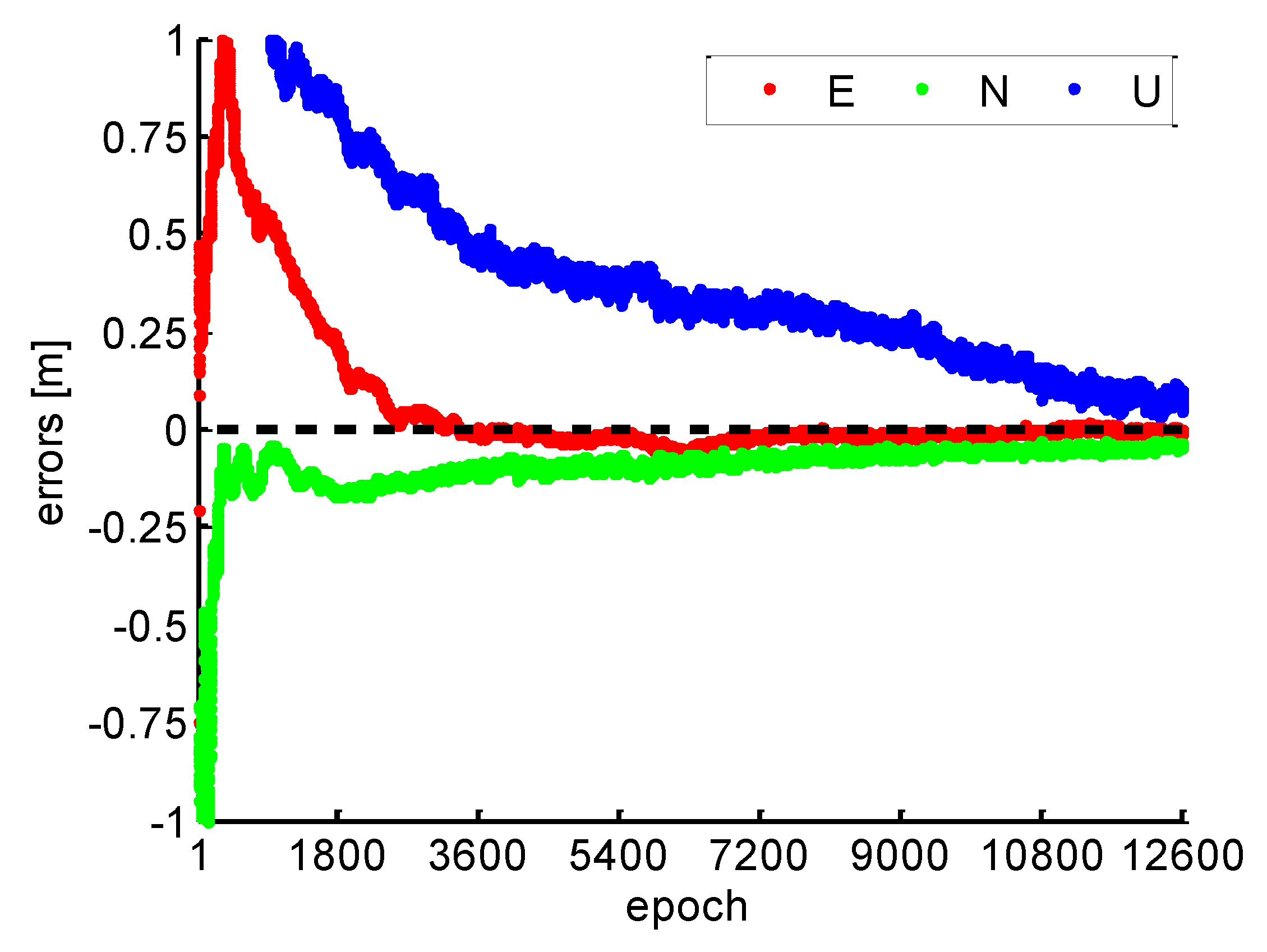
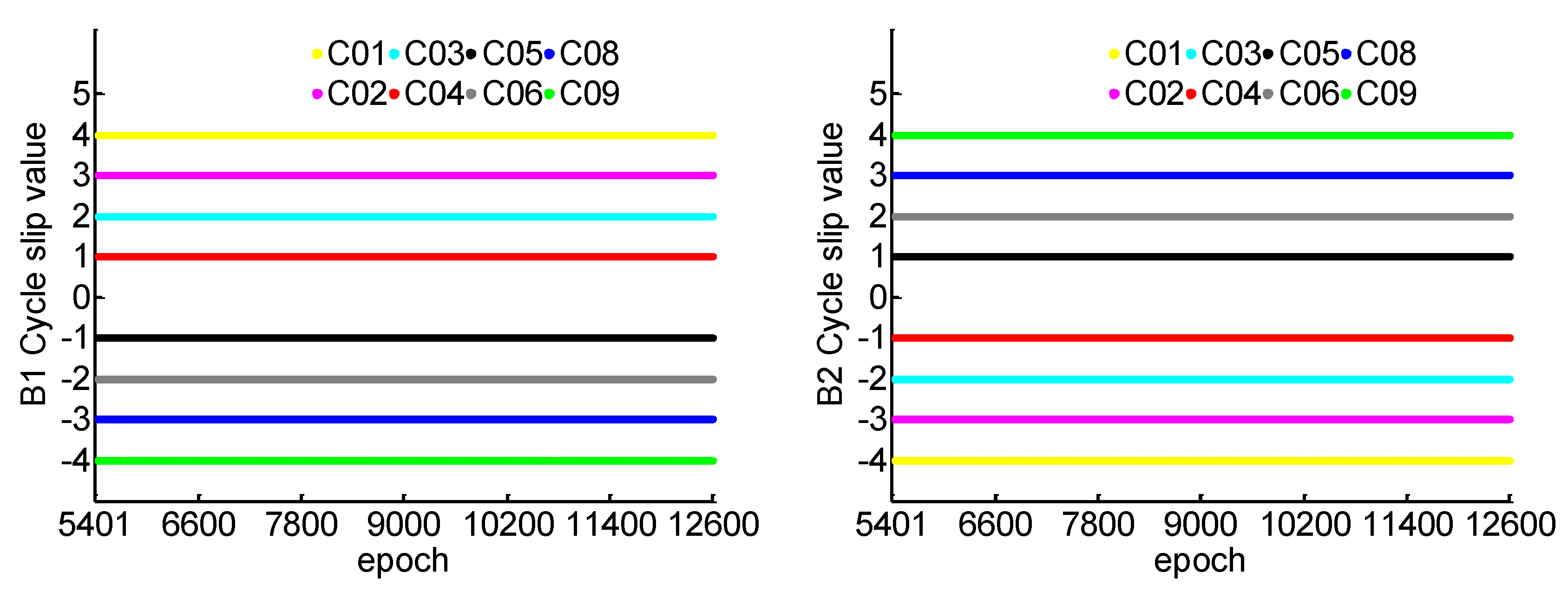
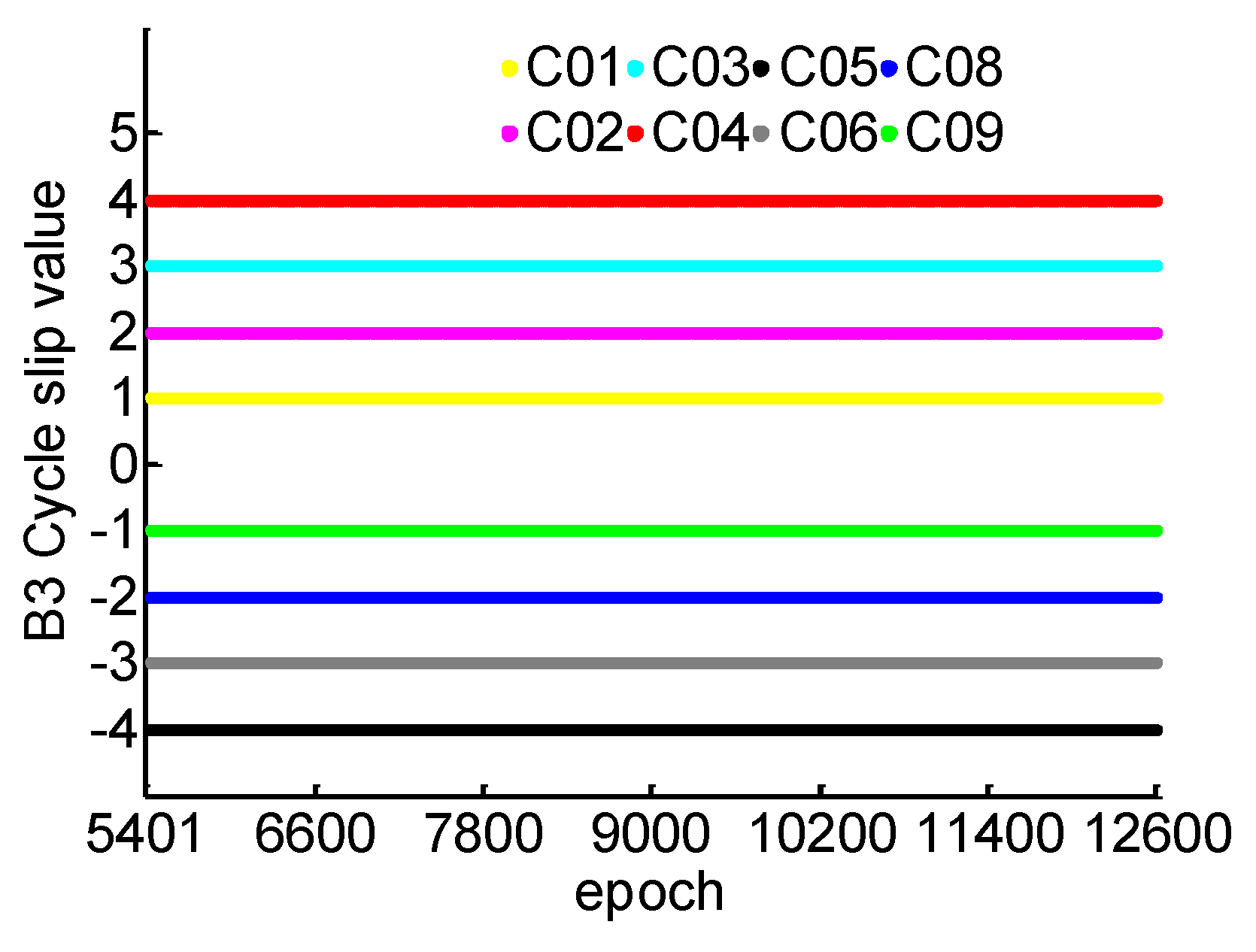

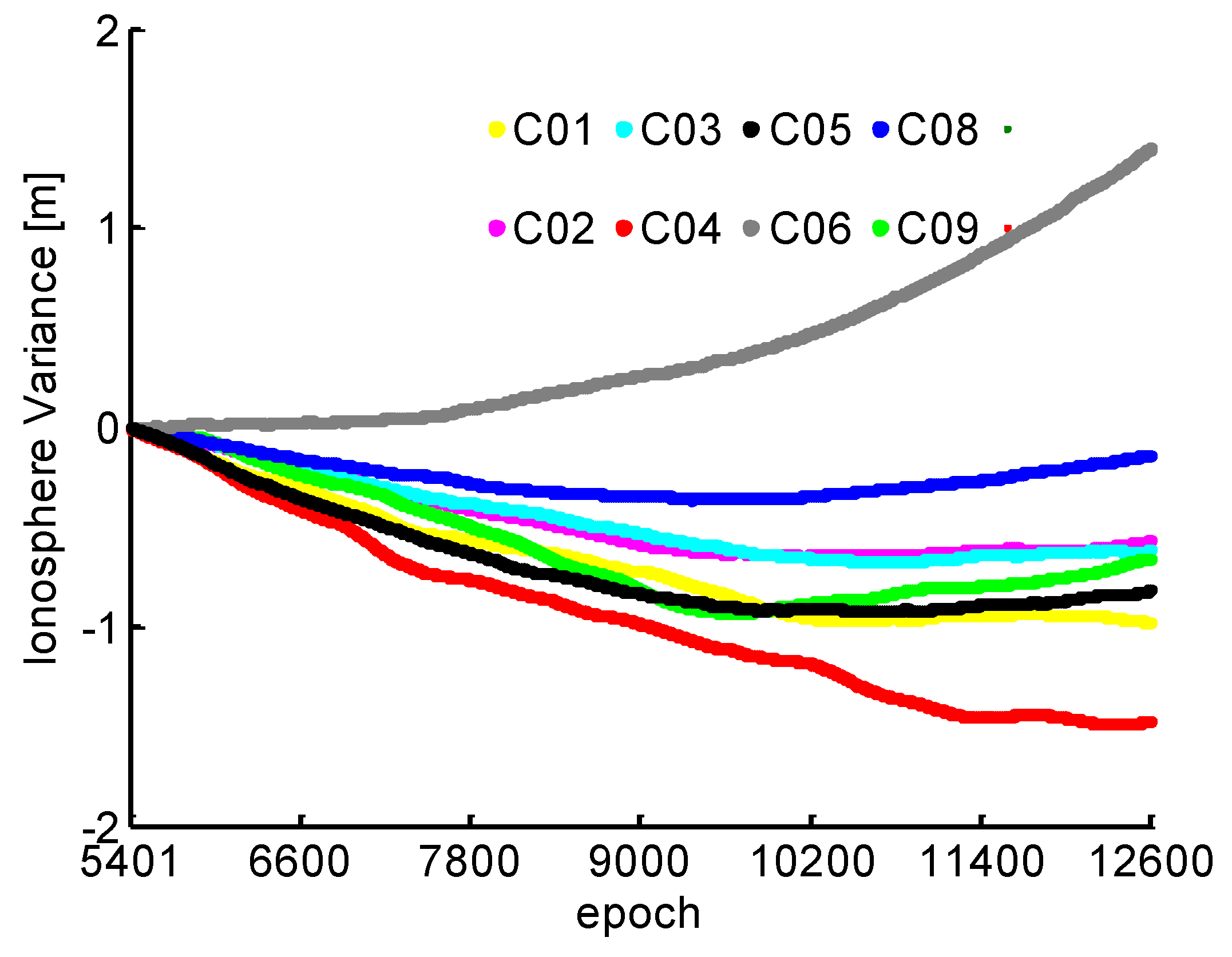
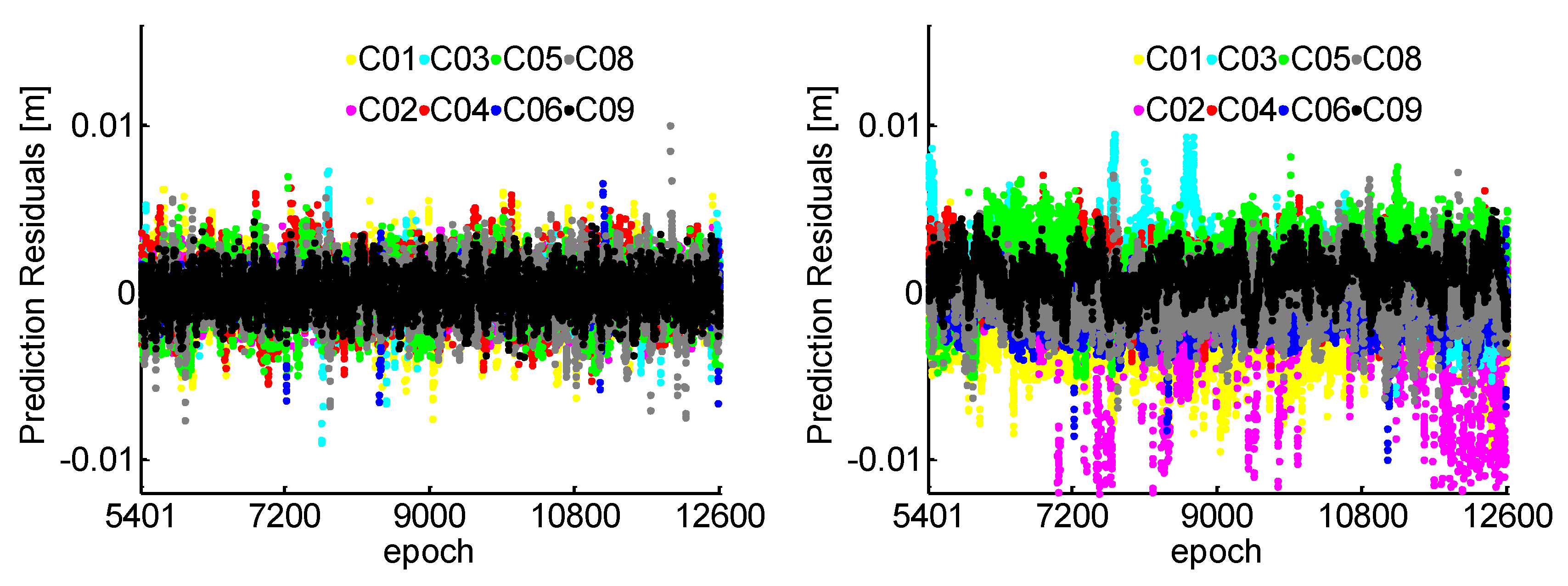

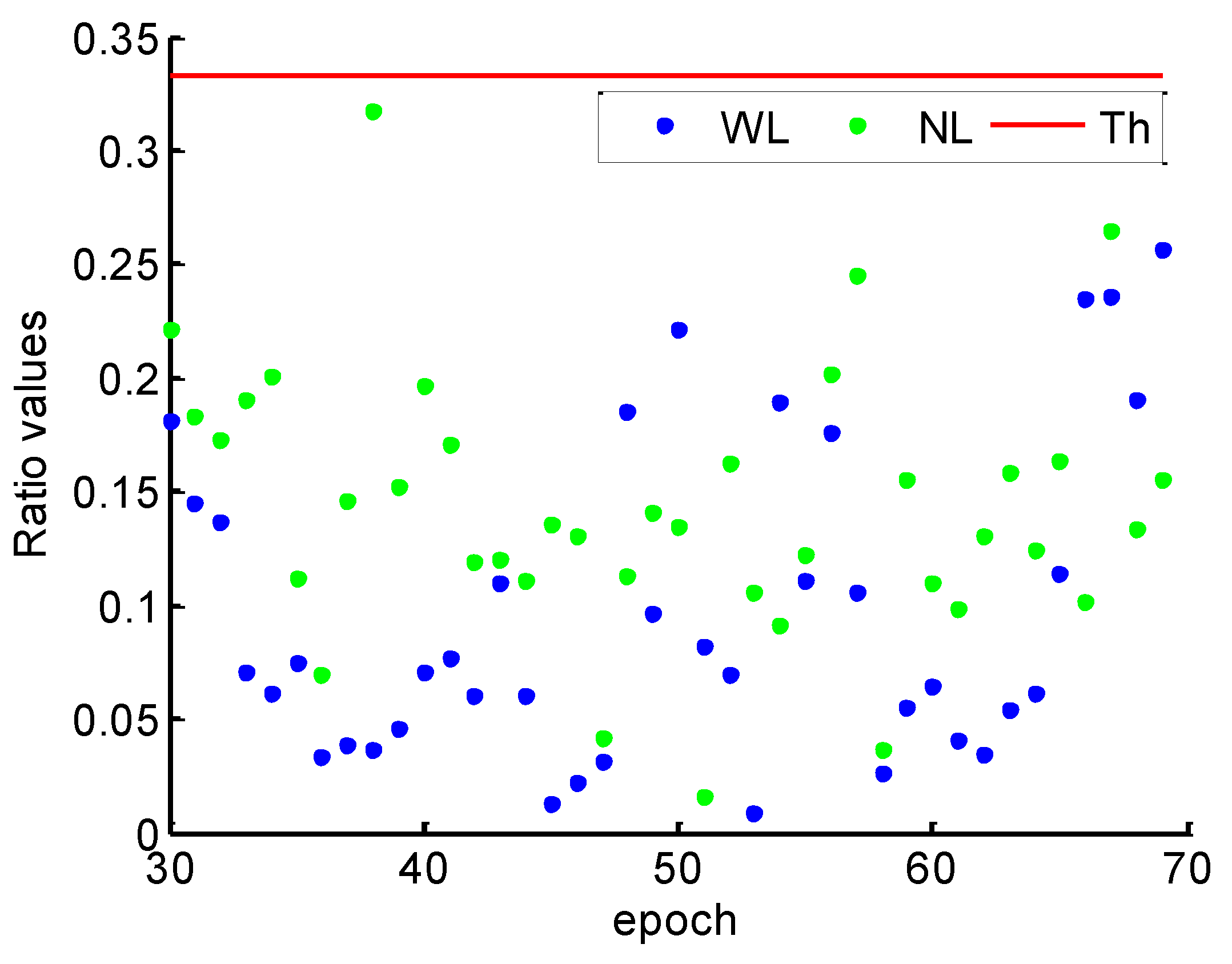
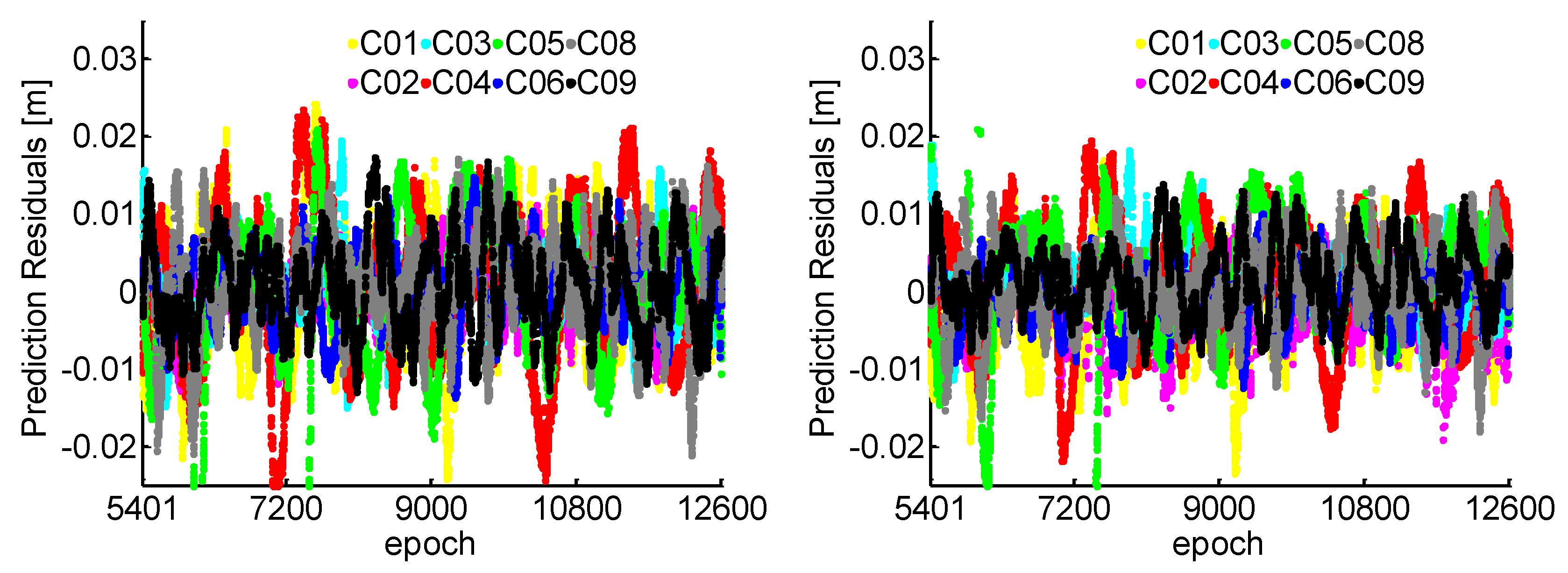

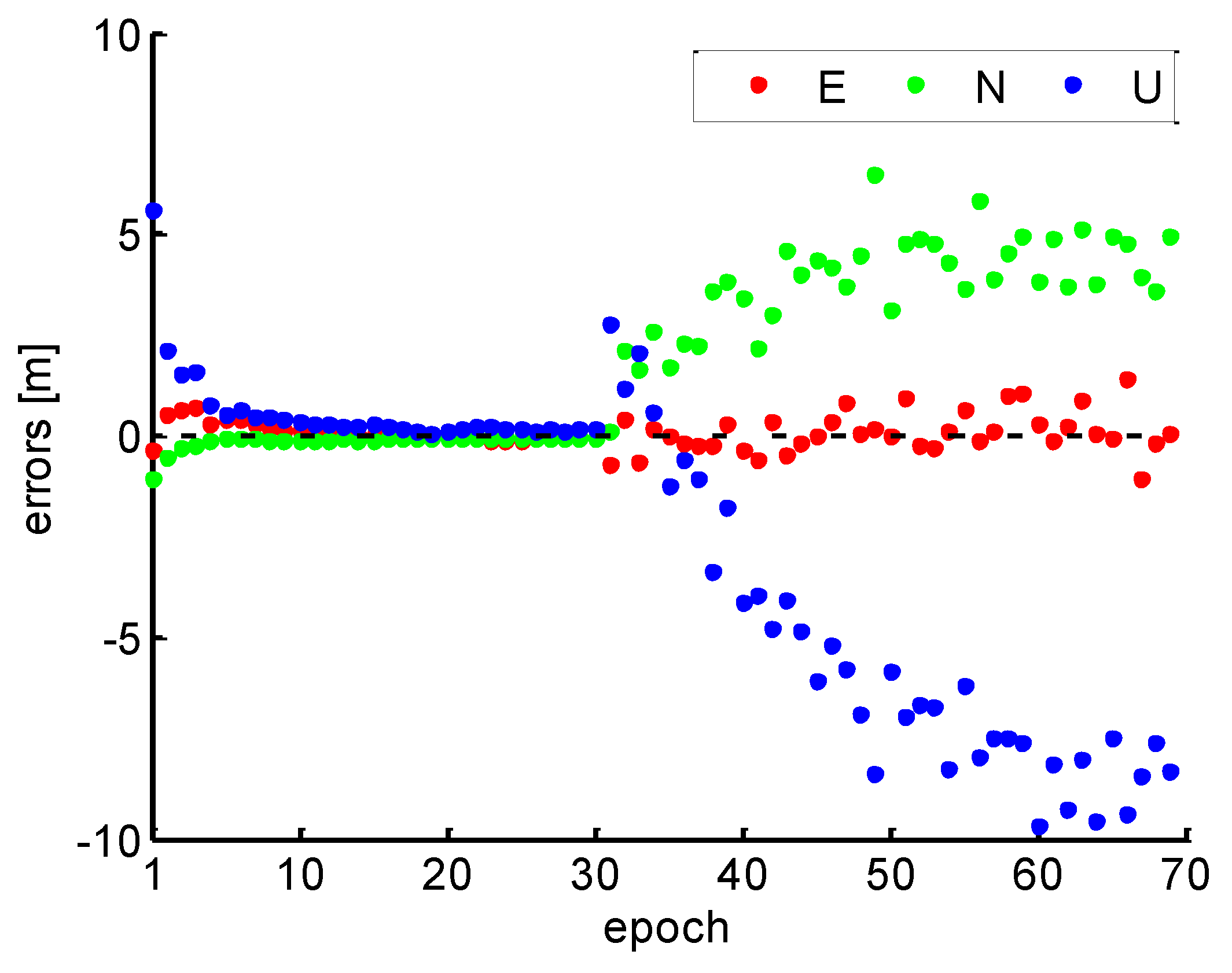

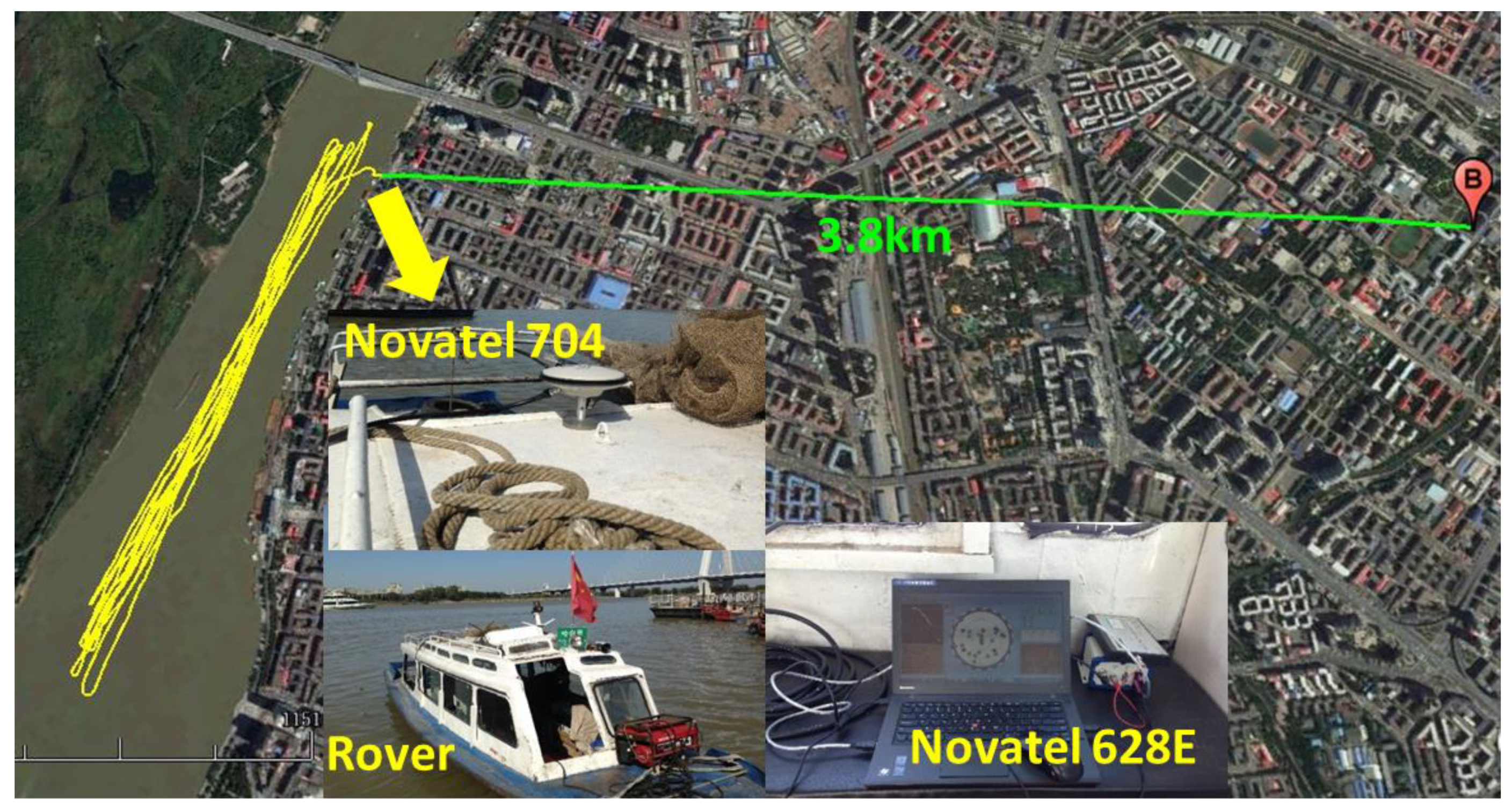
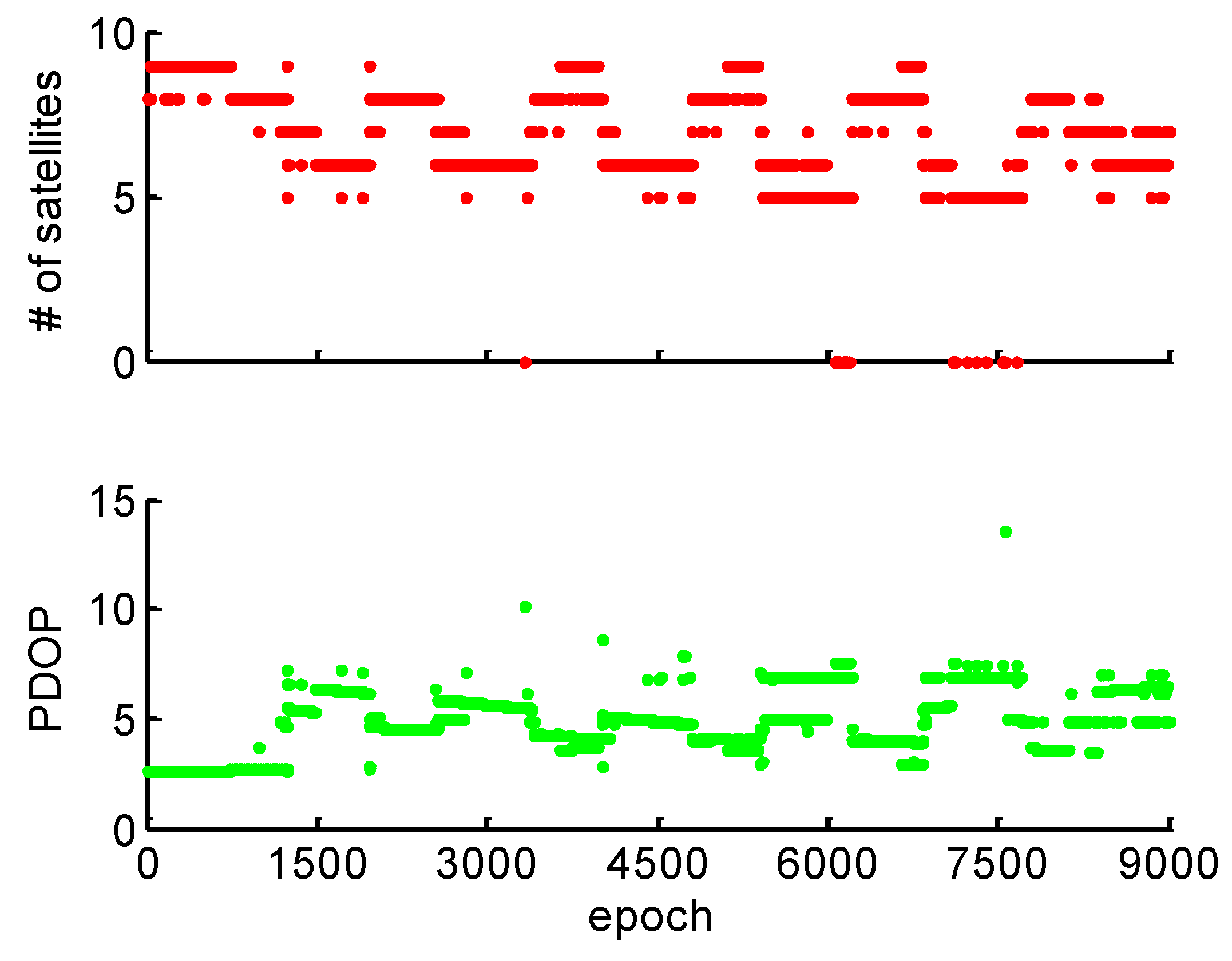


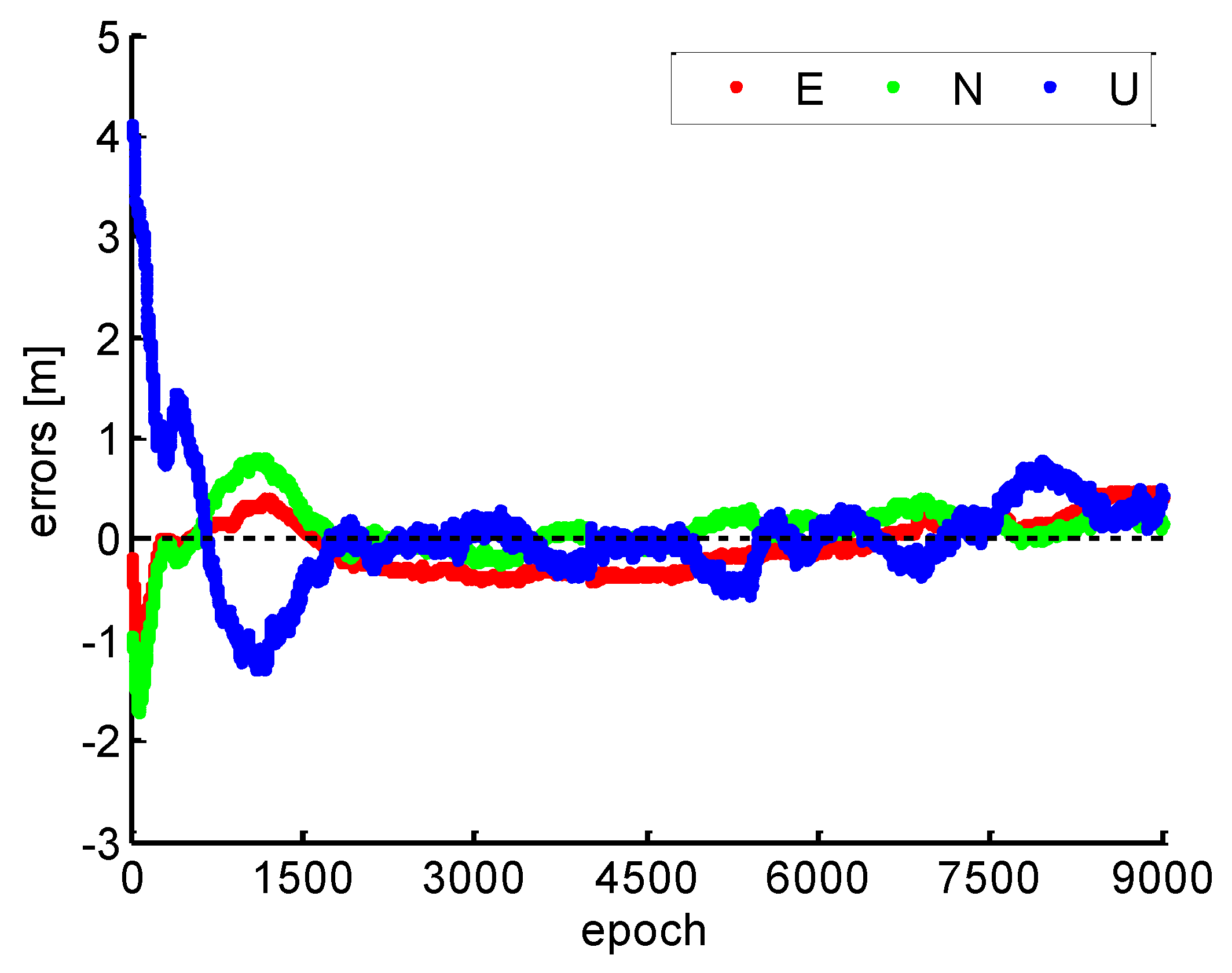
| Interval | 30 s | 60 s | 120 s | 180 s | 240 s | |
|---|---|---|---|---|---|---|
| Success Rate | ||||||
| WL | 100% | 100% | 100% | 100% | 100% | |
| NL | 100% | 100% | 100% | 100% | 87.5% | |
| Interval | 30 s | 60 s | 120 s | 180 s | 240 s | |
|---|---|---|---|---|---|---|
| RMS | ||||||
| B1/B2 | 0.002 m | 0.003 m | 0.005 m | 0.007 m | 0.009 m | |
| B1/B3 | 0.002 m | 0.003 m | 0.004 m | 0.006 m | 0.008 m | |
© 2018 by the authors. Licensee MDPI, Basel, Switzerland. This article is an open access article distributed under the terms and conditions of the Creative Commons Attribution (CC BY) license (http://creativecommons.org/licenses/by/4.0/).
Share and Cite
Yang, F.; Zhao, L.; Li, L.; Cheng, J.; Zhang, J. Ionosphere-Constrained Triple-Frequency Cycle Slip Fixing Method for the Rapid Re-Initialization of PPP. Sensors 2019, 19, 117. https://doi.org/10.3390/s19010117
Yang F, Zhao L, Li L, Cheng J, Zhang J. Ionosphere-Constrained Triple-Frequency Cycle Slip Fixing Method for the Rapid Re-Initialization of PPP. Sensors. 2019; 19(1):117. https://doi.org/10.3390/s19010117
Chicago/Turabian StyleYang, Fuxin, Lin Zhao, Liang Li, Jianhua Cheng, and Jie Zhang. 2019. "Ionosphere-Constrained Triple-Frequency Cycle Slip Fixing Method for the Rapid Re-Initialization of PPP" Sensors 19, no. 1: 117. https://doi.org/10.3390/s19010117
APA StyleYang, F., Zhao, L., Li, L., Cheng, J., & Zhang, J. (2019). Ionosphere-Constrained Triple-Frequency Cycle Slip Fixing Method for the Rapid Re-Initialization of PPP. Sensors, 19(1), 117. https://doi.org/10.3390/s19010117






